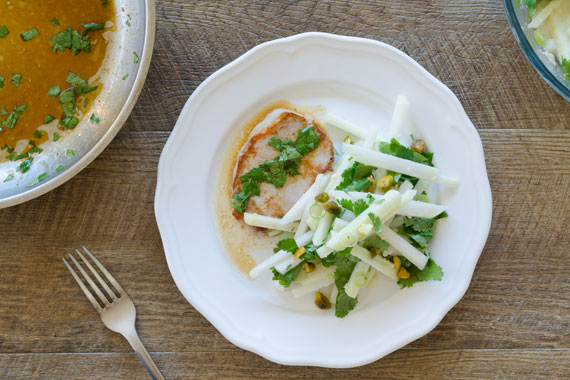Celeriac is the frog prince of winter vegetables. Pare away its warty exterior and you’ll uncover a royal vegetable within: a perfect, ivory-fleshed alternative to potatoes and other starches. It’s an ingredient so epic that it was mentioned in Homer’s Odyssey where even the God Hermes could not help being charmed.
Although not popular in Australian kitchens, it has long been a favourite in Europe. A relative of the common leafy celery it has a similar aroma but comes with a more mild flavour. A winter vegetable, it takes farmers about 120 days from seeding to harvest, and actually benefits from a few days of frost before harvest.
We find that a paring knife, rather than a peeler, works best for removing the outer skin. Shave downward with the blade in broad strokes. Placing the prepared celeriac into acidulated water (water into which some lemon juice has been squeezed) will prevent discolouration.
Celeriac is very low in calories, 100g of root has just 42 calories. However, it’s a very good source of vitamin K, with 100g of root providing about 41µg or 34% of the recommended daily intake. It’s also rich in vitamin C, potassium and fibre.
Celeriac is the perfect substitute for potatoes in soups or stews, but we think it’s even better when prepared as traditional French side salad. Try it in our apple and celeriac slaw.

